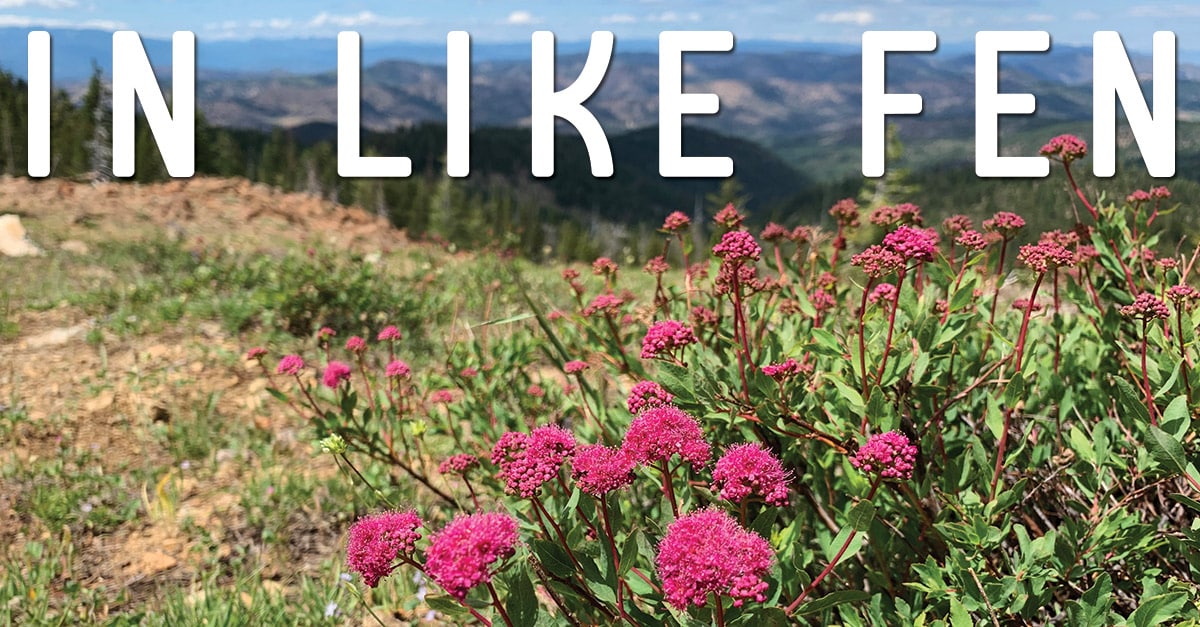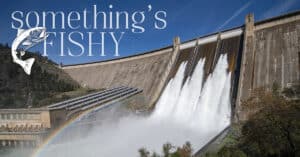In Like Fen
Explore the Botanical Beauty Along the Fen Trail…
Tall, tiny, sprawling, spiky, colorful or carnivorous, Klamath National Forest’s Fen Trail offers an interesting mix of botanical characters – plus cool rocks and great views.
The one-mile trail near Kangaroo Lake northwest of Weed is within a Botanical Special Interest Area of Klamath National Forest. It has fens, meadows, creeks, forest and rocky outcroppings with varied plant communities. In summer, the trail pops with wildflowers.
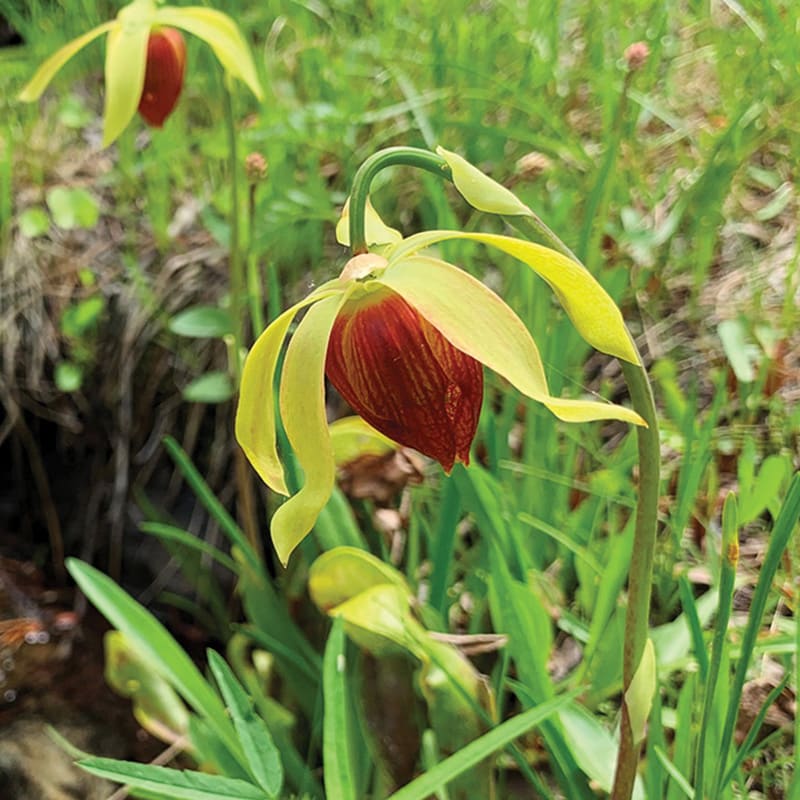
“It’s hard to find a hike that has this many
different habitat types in a mile stretch,”
says Erika Carlson, environmental coordinator
on the Salmon/Scott Ranger District.
“On this trail you are going to keep seeing
new things all the way.”
“It’s hard to find a hike that has this many different habitat types in a mile stretch,” says Erika Carlson, environmental coordinator on the Salmon/Scott Ranger District. “On this trail you are going to keep seeing new things all the way.” The up-and-back route begins just off the road near Kangaroo Lake and climbs 600 feet to a ridgetop. Interpretive signs provide details and context.
At the beginning of the hike, look for Scott Mountain phacelia (aka Trinity phacelia) with small white flowers featuring purple marks in the center. It’s endemic to the area, found only near Kangaroo Lake and just over the ridge. The Fen Trail is a showcase of many wildflowers, including columbine, sneezeweed, anemone, buckwheat, sticky starwort, gentian and phlox.
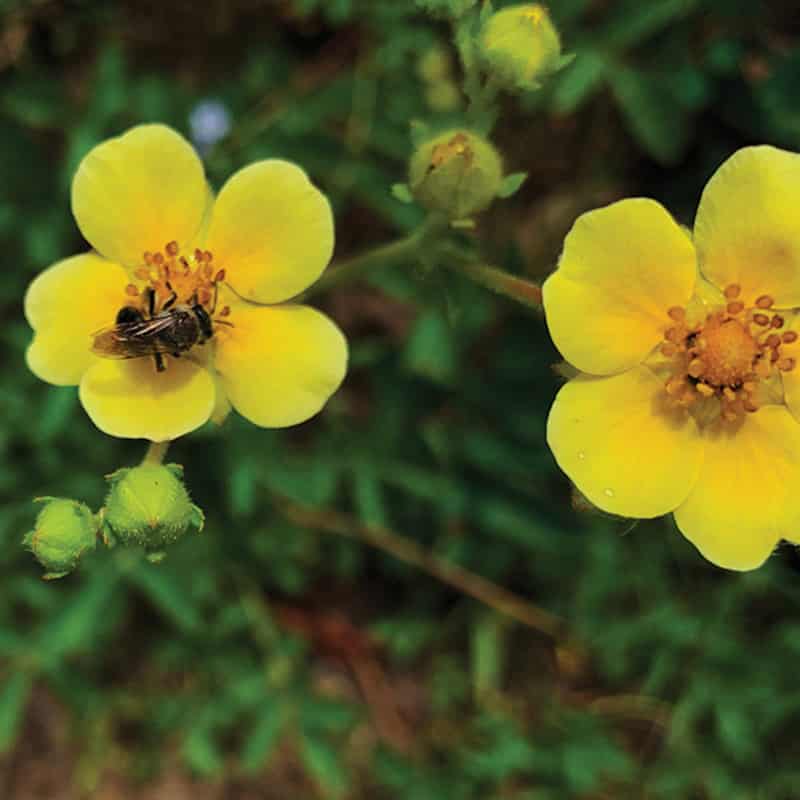
Bear-grass makes a bold appearance when in bloom. Most of the time the plant resembles a clump of grass (even though it’s actually in the lily family). Individual bear-grass plants get flashy every five to seven years or so, sending up tall stalks topped with knobs of tiny white flowers. En masse, the showy spikes create a magical, botanical vibe.
The Fen Trail is named for squishy fens along the way. Unlike bogs with standing water, fens feature flowing water. Shallow bedrock holds cold water from springs and snowmelt close to the surface. “Fens are a big contributor to diversity of species of flowers,” Carlson says.
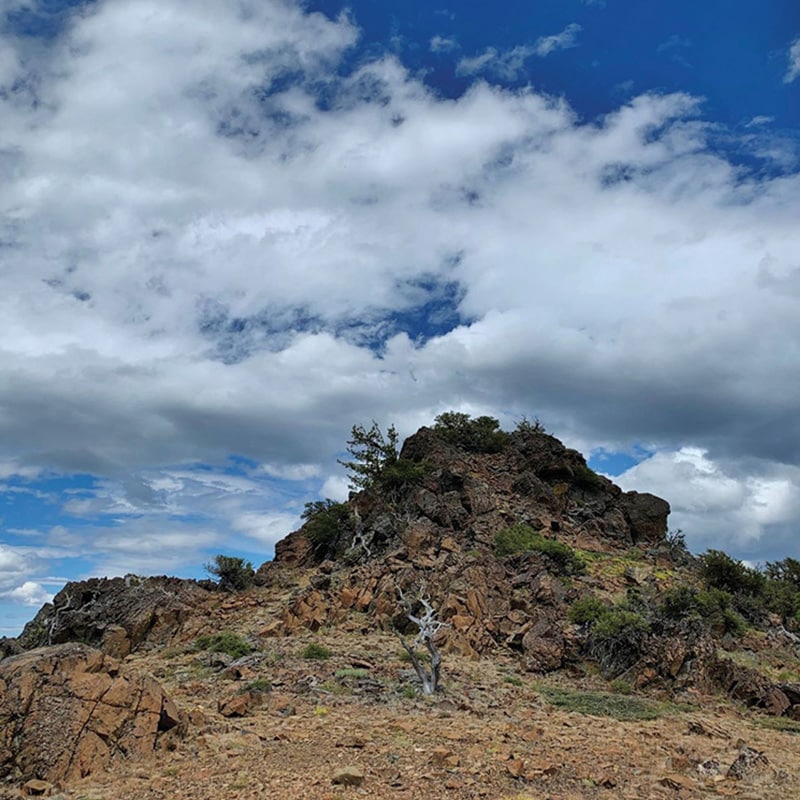
The constant cold water provides ideal growing conditions for Darlingtonia californica, known commonly as California pitcher plant or cobra lily. It’s the Fen Trail’s quirkiest character. Bright-green, tubular leaves rise 10 to 14 inches from the ground and bend downward, creating a curved hood adorned by a small leafy appendage similar to a forked tongue (hence the snaky name).
Cobra lily is carnivorous. Tiny insects, intrigued by translucent dots on the hood, wander in only to discover there’s no way out. Stiff, downward-pointing hairs prevent escape. The captives plop to the bottom where bacterial action turns them into a nutritious, buggy boost for the plant. In keeping with their peculiar character, cobra lilies produce unusual flowers – droopy maroon blooms on tall, slender stalks. “It doesn’t look like it is coming from the same plant,” Carlson notes.
Another habitat found off the Fen Trail is old-growth forest. The towering trees making up the dense forest include Shasta red fir, mountain hemlock, western white pine and lodgepole pine.
Rock formations — among the oldest in western North America – are a geologic highlight of the hike. Dark reddish ultramafic rock originated from deep in Earth. High iron content is responsible for its rusty coloring. “These are really old rock formations, weathered down through time,” Carlson says.
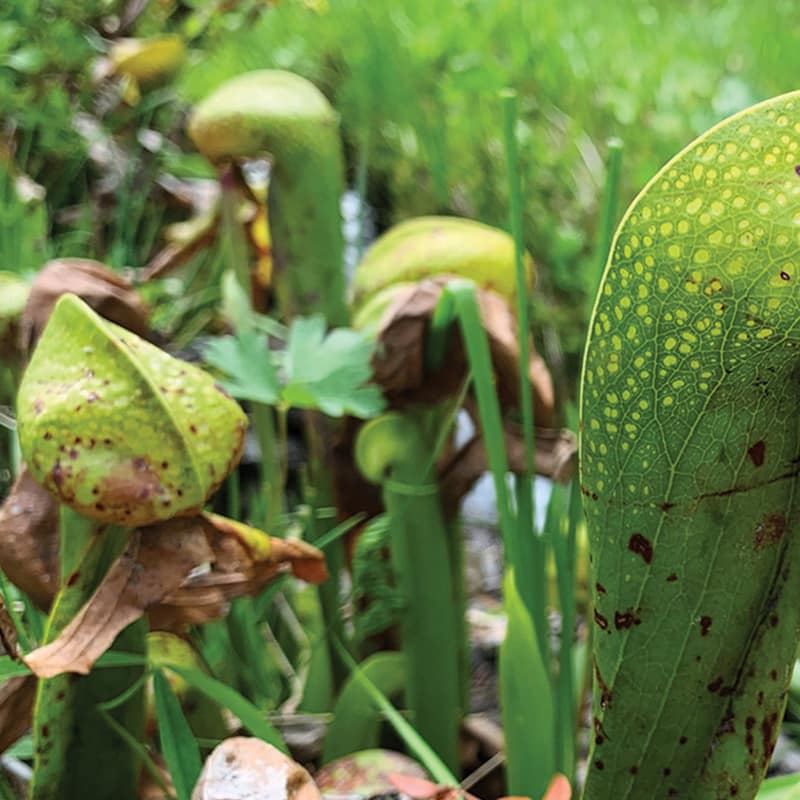
Striations visible on some rocks are ancient reminders of boulders being scraped along the rock surface by glacial ice. Ultramafic soils are nutritionally bleak, Carlson notes, and the plants that grow in them have become uniquely adapted to the conditions. Among tiny flowers popping up in rocky places are Erigeron bloomeri var. nudatus (scabland fleabane) and Dicentra pauciflora (short-horn steer’s-head).
Dicentra is one of Carlson’s favorites. “It’s very small and easy to miss. It’s adorable. It shoots straight out of the rocks … It’s so different looking.”
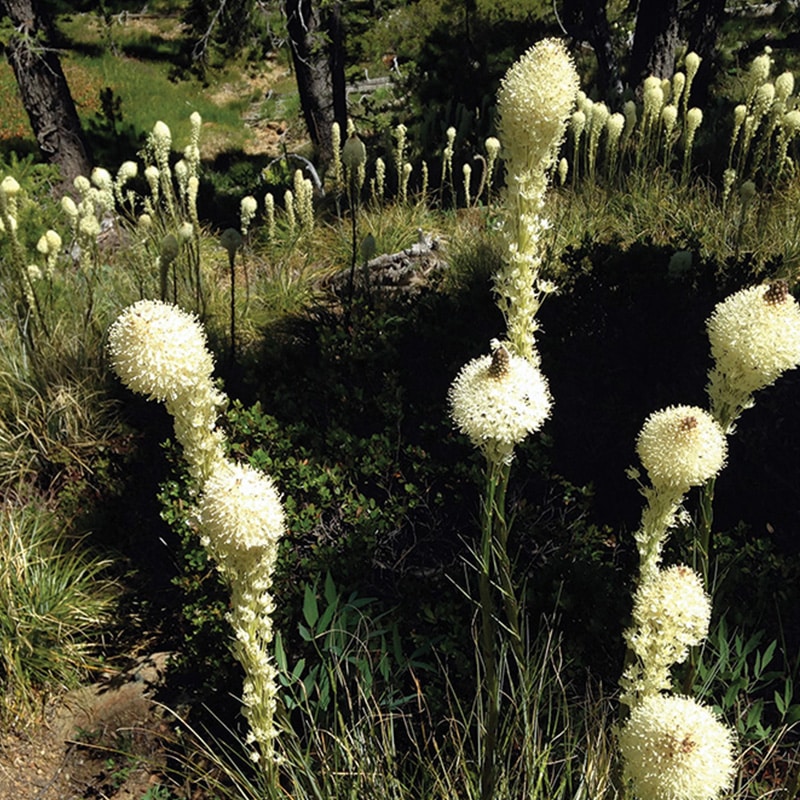
To notice the small flowers, you’ll need to be looking down and paying close attention. But there’s also much to see by looking up and out. An overlook provides a great view of Kangaroo Lake in its glacial cirque, and there’s a vista point offering a panorama of the Marble Mountains, Scott and Shasta valleys and China Mountain. The trail ends at 6,100 feet in elevation at the Scott River and Trinity River Divide. “The views from the trail are just as rewarding as seeing the flowers. It is beautiful up there,” Carlson says.
Peak time for wildflowers on the Fen Trail is typically mid-July, but because plants bloom on varied schedules, there are joys to be discovered at various times. “There’s usually something unique and interesting to see any time of the summer,” Carlson says.
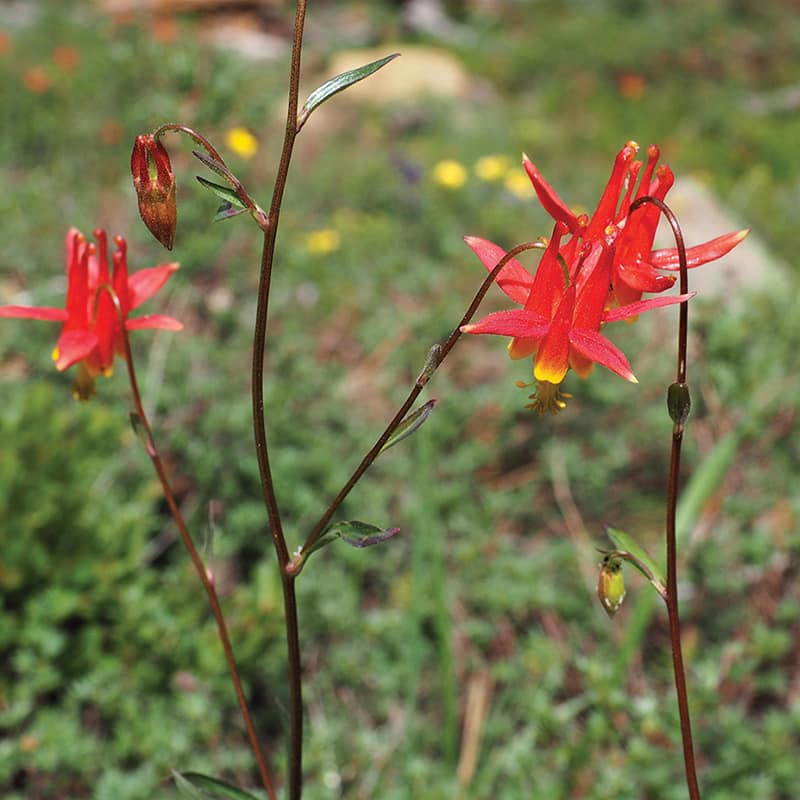
Unlike a lot of mountain trails, the Fen Trail is accessible by a paved (although narrow) road that ends at Kangaroo Lake. The lake offers picnicking, swimming, fishing and camping (18 sites). •
Directions: Take the Edgewood/Gazelle exit on Interstate 5 and go north on Old Highway 99. Turn left on Gazelle-Callahan Road, left on Rail Creek Road (look for Kangaroo Lake sign) and go eight miles to the lake.
www.fs.fed.us/wildflowers/regions/Pacific_Southwest/KangarooLake/index.shtml

